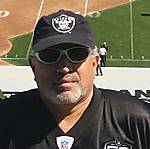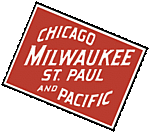Quoted Text
The P-38 was successful - up to a point. In the 8th Air Force in Europe it couldn't compete against the FW 190 and Me 109...It had the lowest servicibility rate in theatre of the three main US fighters. In N/W Europe the P-38 failed in its main role, that of fighter.
History bears this out--to a point. P-38E-H over NW Europe were plagued by technical problems and weather: low temperatures and high humidity (even in summer) that wreaked havoc on the engines and turbo superchargers; compressibility kept it from catching Germans in a dive or escaping in a dive. The pilots froze and windshields frosted over. Their rate of roll was poor. All of the good qualities the aircraft offered were negated by these conditions. They were failures over NW Europe as escort fighters.
P-38J and L had boosted ailerons and dive brakes. They could roll better and dive after the Germans. P-38 could turn very tight for such a big bird, tight as single engine fighters--tighter than some. With counter-rotating props it did not suffer from torque in a tight turn, and its stall was straight ahead. As such it could out-turn Bf-109Gs at most speeds, and even FW-190s--the FW had a vicious warningless stall that resulted in a 'flick', thus few pilots would fly it to its potential. IIRC, they never solved the engine/turbo problems for high altitude ops and thus serviceability stayed low. And when P-38J and L were proving they could dogfight, Gen. Doolittle had had a belly full and got rid of them as 8th AF escorts. So in that regard even the J and L were failures over NW Europe as high-altitude fighters. When they fought below 20000 they were dangerous to the Jagdwaffe.
Quoted Text
So far I can't find any evidence that there ever was a test carried out in which a P-38 was pitted against a Mosquito; to say "a like number of Mosquitos would not last long against a like number of P-38s" has never been, nor ever could be proven properly.
Power-to-weight ratio, wing loading, rate-of-roll and cornering velocity, rate-of-climb and dive, visiblity, handling, speeds, most favor P-38J/L against FB.VI. I can not find the stall speeds or G limits on either--that would really help figure out turn rate/radius. Without them, we are stuck with pilot reports.
Quoted Text
pitted against the best fighters available to the Luftwaffe
Mossie didn't go out on air-to-air missions except for night bomber escort and interceptor duty. Its job was to stay away from the best fighters available to the Luftwaffe.
Guys, don't get me wrong. Mosquito is one of
THE BEST warplanes of WW2. But an air-to-air fighter is wasn't. P-38 could tangle with single-engine fighters, whereas that usaually ended badly for Mosquito. Now Mosquito was developed into Hornet, a world-class fighter.
Mosquito had the capacity to grow and adapt. It could do many things P-38 could never do. But P-38 could have been developed if P-47 and P-51 had failed, but I wonder if the limitations of the supercharghers would ever have been ironed out, allowing it to perform well over NW Europe? That remains speculation. With any fighter--any aircraft--it all comes down to the engine.
















































